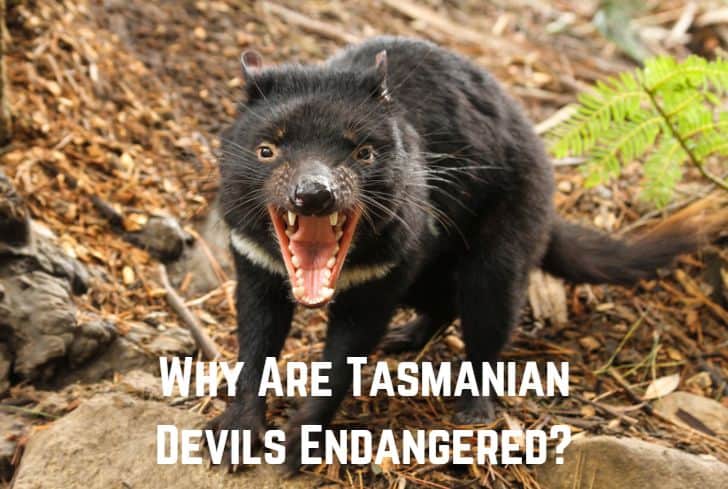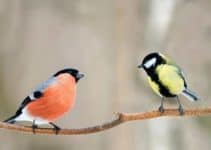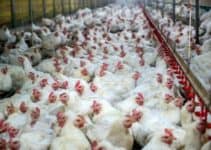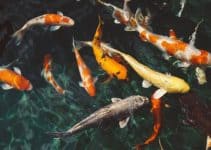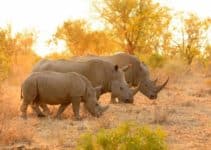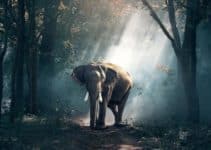The planet is full of several animals, including herbivores and carnivores. There are several animals on land that are mammals, and among them are Marsupials. Marsupials are mammals with pouches, like the Tasmanian devils, kangaroos, and koalas.
Some of these animals are what we refer to as endangered species. Endangered species refer to a group or class of animals that are constantly hunted and are at the threat or risk of becoming extinct. The Tasmanian devils are among the endangered species on the planet.
Tasmanian devils are unique animals; they are primarily exclusive to Australia. It will be a shame if these precious animals become extinct. As a result, you should know how these animals are endangered so you do not cause their extinction.
What Are Tasmanian Devils?
The Tasmanian devil is the largest marsupial carnivore from the Dasyuridae family. It was previously restricted to the island province of Tasmania, but a minor breeding population has since been brought to South Wales on the land of Australia.
Its distinguishing features are its stout and robust form, black fur, offensive odor, piercing shriek, excellent olfactory senses, and fury when eating. The Tasmanian devil produces among the sharpest bites per unit of body weight of any living predatory terrestrial mammal.
This animal has a huge head and neck; it scavenges carrion and seeks prey. Although devils prefer to live alone, they occasionally gather in a group to eat and urinate. The devil thermoregulates efficiently, allowing it to be active without being too hot.
It can climb a tree and paddle across streams despite its chubby look, amazing speed, and stamina. The male devils are often bigger than the females because they have an average weight of 18 pounds.
In order to hold meals, devils have five lengthy toes on their feet, four extending to the front and one protruding from the side. The talons on the devils’ four-toed hind feet are not retractable. The low mass center of the stocky devils is noticeable.
Devils frequently use 3 or 4 dens. Due to their protection, former wombat dens are particularly coveted as maternity dens. Dens can also be found in caves, dense grass tussocks, and vegetation close to creeks.
Devils utilize the same dens their entire lives. Since a haven is highly valued, it is thought that certain animals have used them for many generations.
Studies have shown that den security’s importance is greater than food security’s, as habitat loss affecting the latter has a greater impact on mortality rates.
How Did The Tasmanian Devil Become Endangered?
The Tasmanian devil, the largest remaining carnivorous marsupial, is considered to be endangered and is at risk of going extinct because of the fatal Devil Facial Tumor Disease, a terrible illness that first appeared in 1996 and for which there is now no treatment.
Devils were once common throughout Australia but are now restricted to Tasmania. The Devils typically pass away three to six months after the highly contagious malignant tumors start to develop around the mouth, neck, and face.
The “Tassie” devil was designated as an organism of least concern in 1996. However, the International Union for Conservation of Nature classified it as endangered in 2008 after conducting the first population assessment since that year.
The native marsupial of Australia has encountered many difficulties, such as a contagious facial tumor and highly prevalent persecution, which have prompted its numbers to fall from as many as 150,000 in the 1990s to as little as 10,000 nowadays, and populations are constantly declining.
Dingoes were Tasmanian devils’ primary predators when they wandered the big island. The introduction of wild dogs greatly influenced the local demise of the devils.
One more significant predator is people. Road kills, predicted to kill 2,205 devils annually during the IUCN evaluation, are the second major threat to Tasmanian devils following DFTD.
What Do Tasmanian Devils Eat?
Tasmanian devils are carnivorous animals; this means they feed on meat. These animals consume other living animals like fish, insects, rabbits, birds, frogs, wombats, squirrels, and macropods.
These animals are great hunters. These marsupials like scavenging for food in addition to hunting for their meal. Devils like to remain concealed during the day because they are antisocial and nocturnal.
They hide themselves during the day in burrows, empty logs, beneath rocks, or tunnels, and come out at night to feast or go hunting. Due to their lengthy whiskers, they can elude predators and find prey or carcasses.
These monsters will consume anything, and once they do, they devour all they find, including skeletal remains, organs, and hair. Tasmanian devils appear slow and clumsy as they stroll along because of their big heads and bulky bodies.
Nevertheless, they are the most vicious predators in Tasmania. Devils can eat the entire corpse, down to the bones, thanks to their strong jaws and shredding teeth. Tasmanian devils frequently gather in bunches to consume carrion.
They are loudest when vying for a spot on a huge corpse. The majority of the commotion comes from when they congregate to consume carcasses, resulting in a lot of snarling and shrieking.
Since they devour much food at once, they are called gorge eaters. Similar to other animals, these marsupials’ tails bulge with fat when they are well-nourished.
Due to their invasive scavenging behaviors and bone-crushing jaws, they are sometimes known as “Australian hyenas.” These animals can finish their living food with forceful bites to the face, neck, or chest when not scouring.
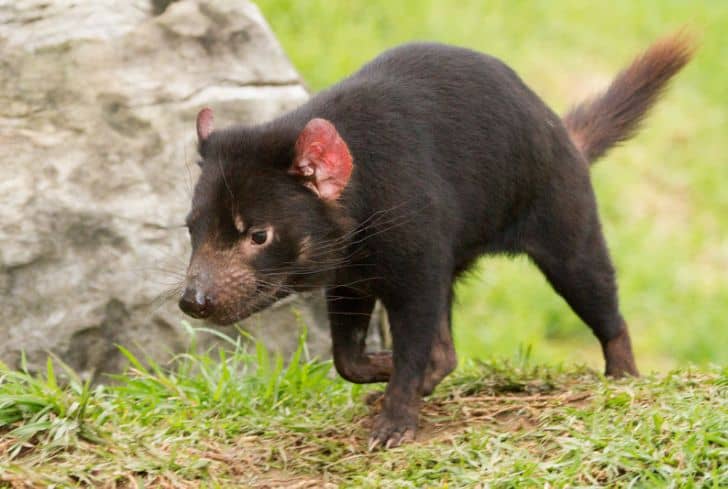
Where Are Tasmanian Devils Found?
They formerly existed all across Australia. The Dingo’s arrival in mainland Australia prior to the arrival of the Europeans caused its demise. Although they favor forests and coastal scrublands, they now live in most of Tasmania.
They carve out dens in caves, hollow trunks, rock cavities, badger burrows, and beneath boulders. It was previously restricted to the island of Tasmania, but a little breeding colony has since been brought to New South Wales on the continent of Australia.
Devils are widespread over the Tasmanian coast, on Robbins Island, and in all ecosystems on the islands of Tasmania, including the edges of metropolitan areas. The inhabitants of the northwestern region can be found in Macquarie Heads in the south.
They were formerly known to exist on Bruny Island in the late nineteenth century, but there are no reports of them existing after 1900. The species was brought back to Australia’s mainland in late 2020 in New South Wales. For more than 3,000 years, devils had not resided on this Australian mainland.
How Many Tasmanian Devils Are Left?
Currently, there are just twenty-five thousand Tasmanian devils in the wildlife today. In preparation for the historic reintroduction, the Aussie Ark team has spent the last ten years creating an insured group of Tasmanian Devils and studying all they can about the creatures.
Tasmanian devils disappeared significantly from mainland Australia due to dingoes, which were imported and hunted in groups, out-competing them. Dingoes were never able to reach Tasmania.
However, the natural population of Tasmanian Devils was annihilated by a contagious, lethal disease known as Devil Facial Tumor Disease, the only known infectious malignancy.
How Strong is a Tasmanian Devil Bite?
The jaws of Tasmanian devils can open to an 80-degree angle, producing much force to rip apart flesh and break bones. They have 553 N-forced bites, the strongest of every living mammal carnivore, per unit of body mass.
The devil’s jaw can open to a maximum of 75 to 80 degrees, which gives it the power to rip flesh apart and break bones with enough energy to pierce the thick metal wire. The relatively large head of the animal contributes to the strength of the jaws.
A dining group of Tasmanian devils would consume every last morsel of a meal, whether bunny or kangaroo, skeletons and all. These animals have strong jaws filled with huge, sharp teeth.
Devils take all their prey, including roadkill, with no leftovers because of their mighty and strong jaws. Tasmanian devils pose no harm to or danger to people.
They do not assault people, but they will protect themselves if they are threatened or cornered. Even though they may look fierce, devils would run instead of battle. However, devils have strong jaws, and their bites have the potential to be very harmful.
Can The Tasmanian Devil Be Saved?
The Tasmanian devil can be saved, and some steps can be taken to achieve this goal. The “Save the Tasmanian Devil” program was started to conduct comprehensive monitoring to learn more about the sickness and health of the wild devil populations.
The sickness has been treated and prevented in several ways, giving the remaining devils some hope. Some devils who appear to be resistant to the illness have been discovered, raising hopes that they will recuperate and that a growing population will emerge.
Populations free of the disease have been segregated on Maria Island and at a facility close to Hobart. Nutritionally balanced Tasmanian Devils should be fostered on the mainland, far from the disease, to avert catastrophic extinction.
This will allow for the maintenance of an insured population while also enabling wild releases when necessary or practical.
Conclusion
Tasmanian devils are most definitely beneficial to their surroundings. Devils have a significant significance since they eat diseased and deceased animals. They probably also help keep feral cats under control in Tasmania, which helps safeguard several native species, like birds.
Now, you know all about the Tasmanian devils. This blog post helps you understand why the Tasmanian devils are endangered and how to save them from extinction. We also discussed everything about Tasmanian devils, what they eat, and where they can be found.
